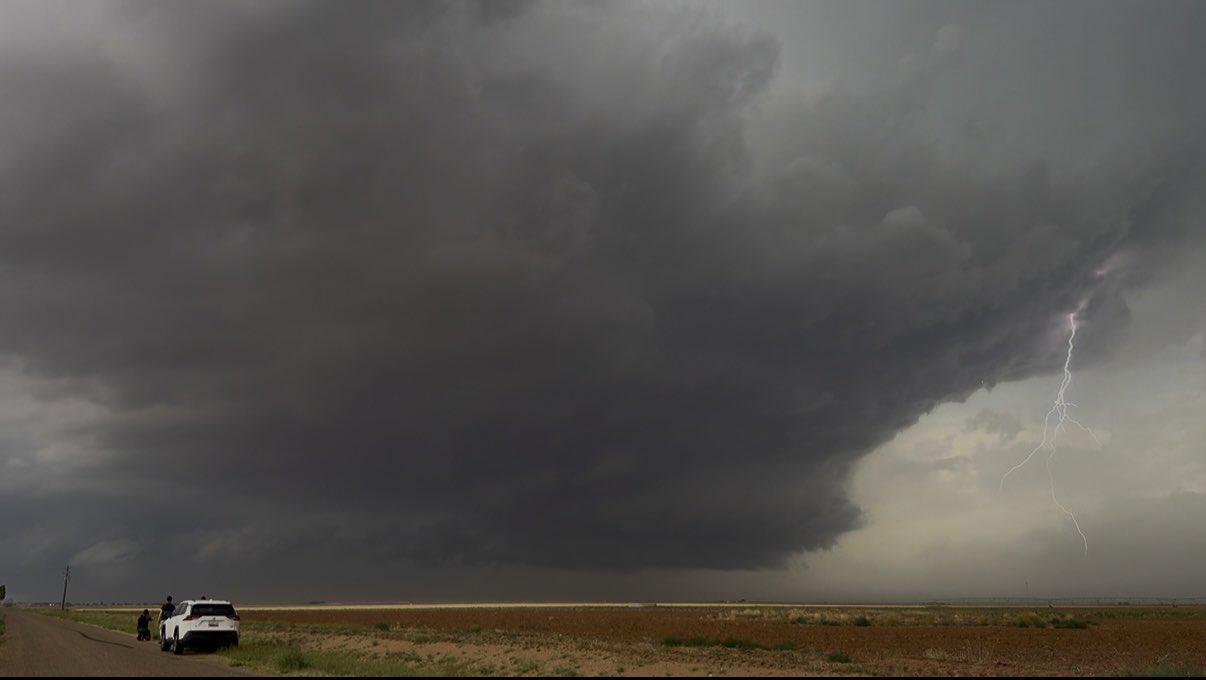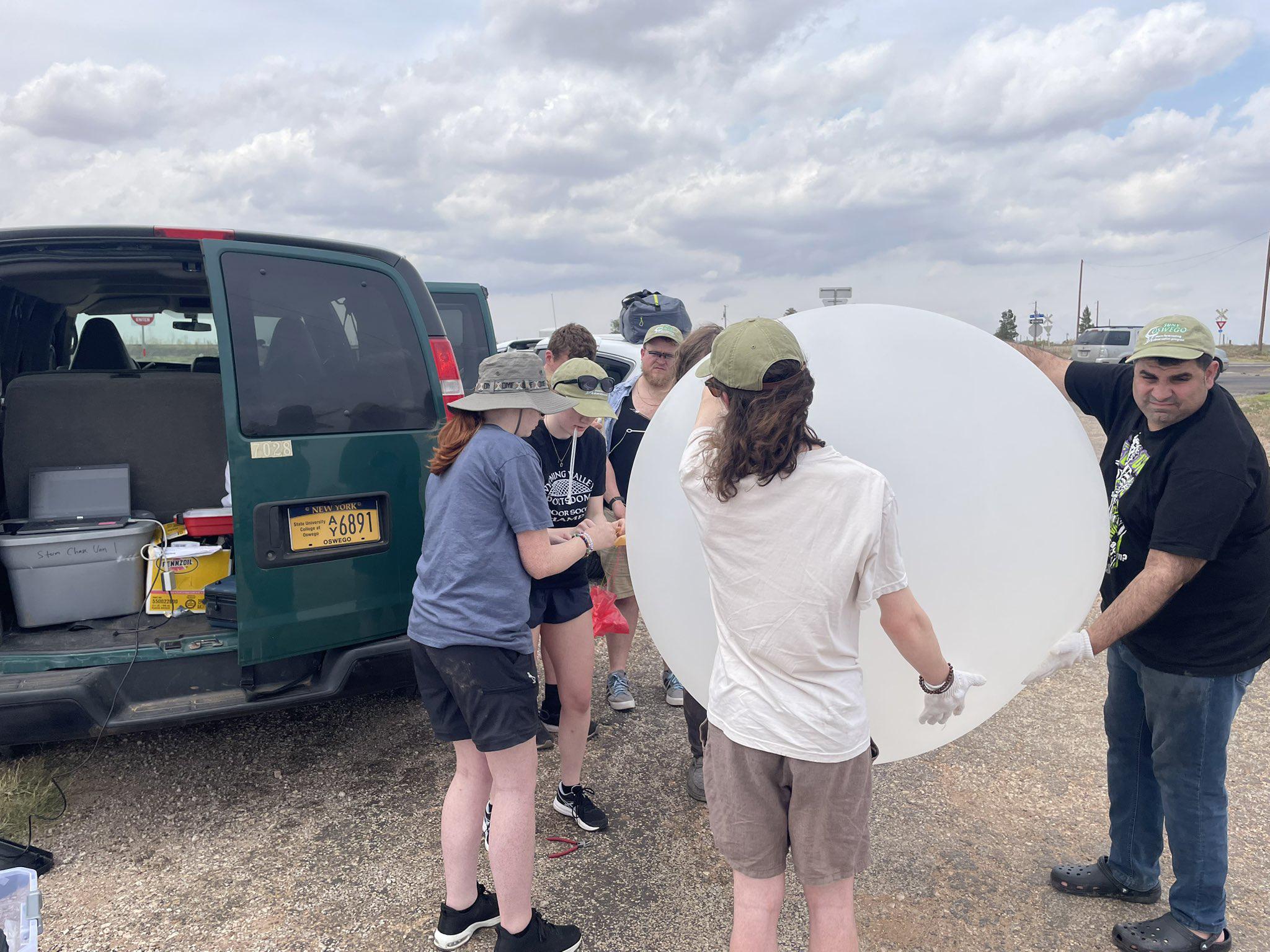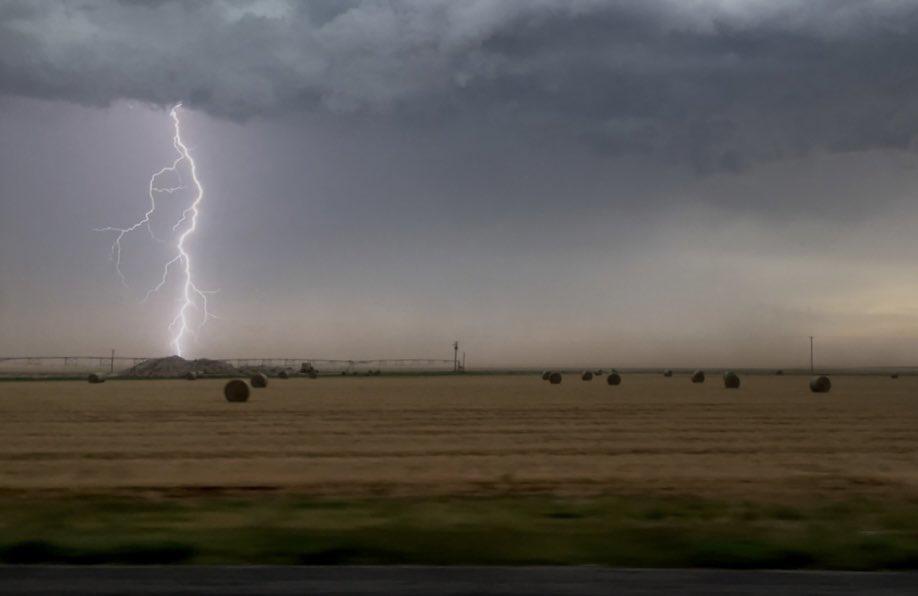Students and instructors from SUNY Oswego’s storm-chasing class caught a lot of severe weather when traveling through northwest Texas on May 29. (Sarah Gryskewicz photo)
A storm-chasing class from SUNY Oswego traveled through the Brownfield-Lubbock-Lamesa area of northwest Texas on May 29 gaining real-life meteorology experience while the region experienced two EF-1 tornadoes.
Meteorology professor Scott Steiger launched the Oswego Chasers program in 2007, and it has run most years since.
In an activity combining classroom knowledge and on-the-ground experience, the chasers observed a rapidly rotating supercell northwest of Brownfield with lightning that also kicked up a wall of dust. They launched weather balloons in nearby Wolfforth to further explore conditions and documented lightning near Lamesa as the storms picked up intensity.
Given the priority on safety, chasers shared the news and sought shelter when Dawson County received a tornado warning, but that didn’t curtail what they were able to accomplish.
“This is true field research, in that it teaches students how to observe the weather and how to forecast it,” Steiger explained. “The best way to do the scientific method is to do an observation, make a forecast based on that observation, and compare what you observed with what you forecasted, and that’s exactly what we do.”
The trip started on May 27, when the team of 12 students and four instructors departed Oswego along Lake Ontario, and is forecast to run through June 10. Every morning, the chasers have a meeting where they determine where the best chances of tornadoes are within driving distance, and then set off to study and potentially observe some extreme weather from a safe distance.
Through real-time field observation, launching weather balloons and evaluating their forecasts, students earn experience beyond what is available with even the best classroom equipment.
Students split into three groups in charge of different aspects of the trip: the logistics team, the equipment team and the forecast team. Since teams are set up in a rotation, students are able to experience each team.
The forecast team studies atmospheric conditions each morning and determines where the group heads next. The logistics team is in charge of navigation, filling the van with gas, cleaning the windows and other tasks. The equipment team is in charge of the weather balloons, including filling them with helium, launching, attaching the radiosonde device and observation.
The team documents their chases on X via the x.com/oswegochasers account.

SUNY Oswego’s storm-chasing team observed severe weather on May 29 including a massive supercell with lightning near Lamesa, Texas. (Zoe Bush photo)

SUNY Oswego students in a storm-chasing class launched weather balloons to take atmospheric readings near Wolfforth, Texas. (Photo courtesy of x.com/oswegochasers)




